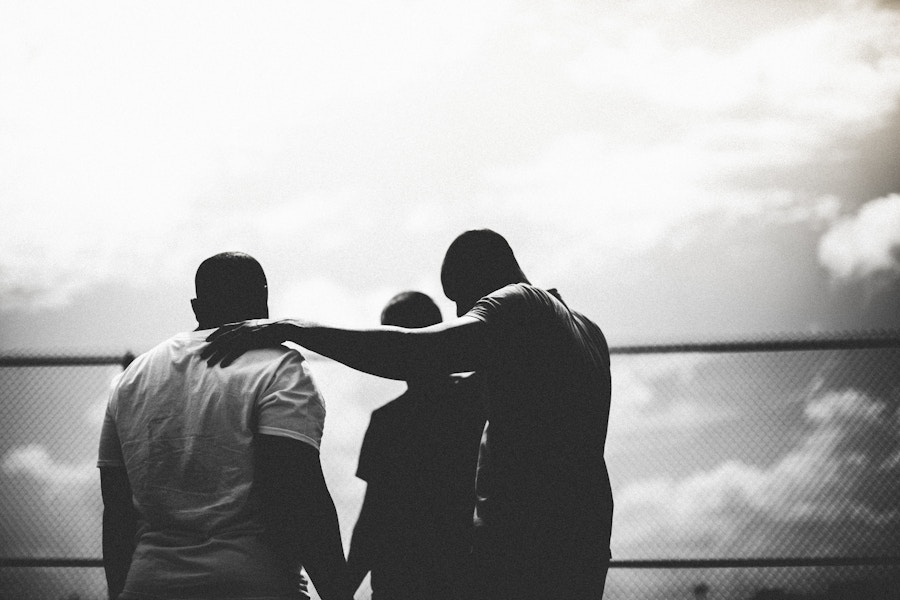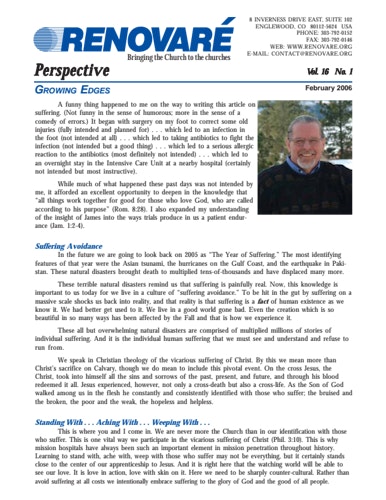A funny thing happened to me on the way to writing this article on suffering. (Not funny in the sense of humorous; more in the sense of a comedy of errors.) It began with surgery on my foot to correct some old injuries (fully intended and planned for)… which led to an infection in the foot (not intended at all)… which led to taking antibiotics to fight the infection (not intended but a good thing)… which led to a serious allergic reaction to the antibiotics (most definitely not intended)… which led to an overnight stay in the Intensive Care Unit at a nearby hospital (certainly not intended but most instructive).
While much of what happened these past days was not intended by me, it afforded an excellent opportunity to deepen in the knowledge that “all things work together for good for those who love God, who are called according to his purpose” (Rom. 8:28). I also expanded my understanding of the insight of James into the ways trials produce in us a patient endurance (Jam. 1:2 – 4).
Suffering Avoidance
In the future we are going to look back on 2005 as “The Year of Suffering.” The most identifying features of that year were the Asian tsunami, the hurricanes on the Gulf Coast, and the earthquake in Pakistan. These natural disasters brought death to multiplied tens-of-thousands and have displaced many more.
These terrible natural disasters remind us that suffering is painfully real. Now, this knowledge is important to us today for we live in a culture of “suffering avoidance.” To be hit in the gut by suffering on a massive scale shocks us back into reality, and that reality is that suffering is a fact of human existence as we know it. We had better get used to it. We live in a good world gone bad. Even the creation which is so beautiful in so many ways has been affected by the Fall and that is how we experience it.
These all but overwhelming natural disasters are comprised of multiplied millions of stories of individual suffering. And it is the individual human suffering that we must see and understand and refuse to run from.
We speak in Christian theology of the vicarious suffering of Christ. By this we mean more than Christ’s sacrifice on Calvary, though we do mean to include this pivotal event. On the cross Jesus, the Christ, took into himself all the sins and sorrows of the past, present, and future, and through his blood redeemed it all. Jesus experienced, however, not only a cross-death but also a cross-life. As the Son of God walked among us in the flesh he constantly and consistently identified with those who suffer; the bruised and the broken, the poor and the weak, the hopeless and helpless.
Standing With… Aching With… Weeping With…
This is where you and I come in. We are never more the Church than in our identification with those who suffer. This is one vital way we participate in the vicarious suffering of Christ (Phil. 3:10). This is why mission hospitals have always been such an important element in mission penetration throughout history. Learning to stand with, ache with, weep with those who suffer may not be everything, but it certainly stands close to the center of our apprenticeship to Jesus. And it is right here that the watching world will be able to see our love. It is love in action, love with skin on it. Here we need to be sharply counter-cultural. Rather than avoid suffering at all costs we intentionally embrace suffering to the glory of God and the good of all people.
I urge you: don’t run from suffering. It is here. It is real. If you have not experienced it personally as yet, believe me, you will. And, frankly, it is all around you — at home, at work, among neighbors and friends.
Two Challenges for Avoiding Suffering Avoidance
So now, here is the first challenge I would like to place before us: find someone who is suffering within your circle of nearness. Our spiritual formation is first always local and specific. So, find a suffering human being. This will come to you as a result of prayerful watchfulness to those in your world. Neighbors. Friends. Even strangers. Then simply be with this person and allow what happens to happen. You will be led I am sure.
This is where we begin, but it is not where we end. Our circle of nearness needs to be expanded. So here is my second challenge: intentionally step outside of your circle of nearness. Experience a short term mission trip. Visit Auschwitz. Read Bury My Heart at Wounded Knee. Take a plunge experience into the urban life in one of our large cities.
Undertaking this second challenge will expand your circle of nearness and will guide you to the next step. I cannot describe that next step for you because it will be individual and specific to your own experience and gift set. You will be led I am sure. Then, mind the Light.
Peace and Joy,
Richard J. Foster
Growing Together
We begin this section on praxis with three reflection exercises.
- Begin with a reflection on the reasons our culture is so committed to suffering avoidance. How does this avoidance evidence itself? What factors come into play to push us in this direction? Are there ways you find yourself participating in suffering avoidance?
- Now, enter a time of reflection on suffering by reading the book of Job. In The Renovaré Spiritual Formation Bible we write about this: “Job, in reaction to his own suffering, demonstrates that there simply is no easy relationship between good fortune and righteousness or between misfortune and wrath. He finds that life is a mystery that can be faced only by trust in and reliance upon God. And this mystery eludes the easy answers of his companions and even his own best explanations. It defies Job’s reason and shatters the boundaries of his understanding — as it does our own. In the end, suffering challenges us to trust in a God, who, in ways beyond our knowing, controls the ultimate destinies of humans and nations” (p. 718).
- As suffering is such a chaos-inducing experience, the lessons of suffering resist easy categorization. We quickly learn that suffering will challenge our deepest convictions and strongest beliefs. Our quest to reconcile suffering with the love of God can lead to despair … or to a deeper knowledge of the love of God. Consider: Are there ways suffering can teach us patience and endurance? Can it lead us to trust in God so as to avoid despair? Can it help us see that God’s reality is beyond the scope of our individual wishes and desires?
- Okay, with these three reflections in hand begin working on the two challenges I outlined in the cover article: find someone in need near you and then increase your circle of nearness so that genuine compassion can flow out to an ever-expanding number of people. Remember, focusing on specific exercises like these are meant to help us develop a habit of engagement with the real world and to defeat the habit of suffering avoidance. William Penn wrote, “True godliness does not turn men out of the world, but enables them to live better in it and excites their endeavors to mend it.”
God’s work in our lives can be painful, but his ultimate goal is to transform us into something better. Imagine yourself as a living house. God comes in to rebuild that house. At first, perhaps, you can understand what he is doing. He is getting the drains right and stopping the leaks in the roof and so on. You knew that those jobs needed doing and so you are not surprised (C. S. Lewis, Mere Christianity, p. 205).
Text First Published February 2006 · Last Featured on Renovare.org August 2018



